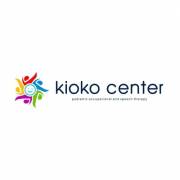
Kiokocenter
Uploaded on Dec 27, 2022
Category
Health & Medicine
Kioko Center has been providing expert pediatric speech & occupational therapy services for children and young adults, aged birth to 21 years, since 2006.
Category
Health & Medicine
Occupational Therapy Services
The Kioko
Center
Our passion is helping children with
special needs and the families and
caregivers that support them.
About Us
Best Pediatric Speech Language & Occupational
Therapy
01 02 03
Clinical Services Sensory Processing Selg Regulation
and Integration
At the Kioko Center, our Self-regulation is our
passion is helping children Sensory processing or bodies ability to attain,
with special needs and the sensory integration refers maintain, and change
families and caregivers to how our body receives, arousal appropriately for a
that support them. . understands, and uses task or situation.
information from the
senses.
Occupational Therapy
Evaluation and Treatment
We offer speech therapy and occupational therapy in our
clinic and online. We provide our patients with the latest
therapeutic interventions to encourage amazing progress
in a fun and family-oriented atmosphere. Our clinical
work gives the children and young adults we work with
the tools they need to reach their full potential. The Kioko
Center our passion is helping children with special needs
and the families and caregivers that support them.
Sensory Processing and
Integration
Sensory processing or sensory integration refers to
how our body receives, understands, and uses
information from the senses. One component of
this process is sensory integration, which includes
interpretation, coordination, and organization of
sensation. Efficient sensory integration enables us
to plan appropriate actions and behavior and learn
new skills. Sensory information comes from all
senses and may originate from one’s body (balance
sense, joint and muscle sense, touch sense) or the
environment (sight, sound, temperature, and
texture). The two sensory integration components
are sensory modulation and sensory discrimination.
These components are interrelated and important
for the acquisition of motor and perceptual skills.
Handwriti
Handwriting refers to the mechanical parts of the actual act ofn formging letters, numbers, strokes, lines,
or simple/complex figures to demonstrate graph motor skills. Below outlines the mechanical aspects of
handwriting.
• Memory: Remembering and writing dictated letters
• Orientation: Orienting or facing letters in the correct direction.
• Placement: placement refers to a child’s ability to place their letters, numbers, words or sentence on
a baseline or whether they float his/her letters and numbers well above the bolded 1/8 or 1/16 of an
inch margin of error depending on their respective age or grade expectations.
• Size: A sizing error occurs when a letter or number is formed larger than the margin of error, which is
1 grade level below the current.
• Start: A start error is noted when a letter or number is not initiated in the appropriate top-down
form.
• Sequence: A sequence error is noted when a letter or number is not constructed in the appropriate
order. The above start and orientation errors are automatically sequencing errors as well.
• Control: Control errors occur when a child over-strokes, rounds, gaps, and points letters and numbers
in the incorrect location. Control errors may also include when mid-point positioning, as well as
identical parts of letters and numbers, are uneven.
Contact Us
978-681-6605
[email protected]
WWW.KIOKOCENTER.COM

Comments